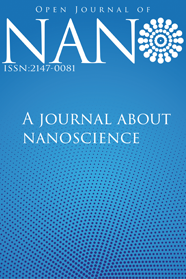Grinding of Calcite to Nano-Size: Effect of Mill Capacity and Grinding Media Shape
Grinding of Calcite to Nano-Size: Effect of Mill Capacity and Grinding Media Shape
The fabrication of nano-sized materials with conventional ball mill is a very difficult process. But it is not impossible. When the capacity of the mill is reduced, the nano-sized product can be reached. In this study, nano-sized calcite was produced by conventional ball mill. Firstly, the mill capacity (feed amount) was reduced, then, the effect of the grinding media type was investigated. Spherical ball and cylindrical shaped “Cylpebs” are used as grinding media. Comparative tests have been performed using Cylpebs and spherical balls in a 20 tph capacity industrial ball mill under the same conditions. The results showed that Cylpebs was more efficient than conventional spherical balls. In addition, the capacity of the conventional ball mill for the fabrication of nano-sized products should be significantly reduced. When the mill capacity is reduced by 75% (5 tph) and grinded with Cylpebs, the fineness (d90) of the product reaches 1300 nanometers
Keywords:
Ball Mill Nano Grinding, Calcite,
___
- [1] Arole, M.V. and Munde, S.V. (2014). Fabrication of nanomaterials by top-down and bottom-up approaches-An Overview, JAAST:Material Science (Special Issue), 1, 2, 89-93.
- [2] Hacıfazlıoğlu, H. 2018. Ultrafine Grinding of Kokaksu Bauxite ore via Stirred Mill and Ball Mill, Open Journal of Nano, Vol.3, no.1. p.1-4.
- [3] Shi, F., 2004. Comparison of grinding media-Cylpebs versus balls.Miner. Eng. 17, 1259–1268.
- Yayın Aralığı: Yılda 2 Sayı
- Başlangıç: 2012
- Yayıncı: Mustafa CAN
Sayıdaki Diğer Makaleler
Gurbet CANPOLAT, İbrahim TEĞİN
Grinding of Calcite to Nano-Size: Effect of Mill Capacity and Grinding Media Shape
